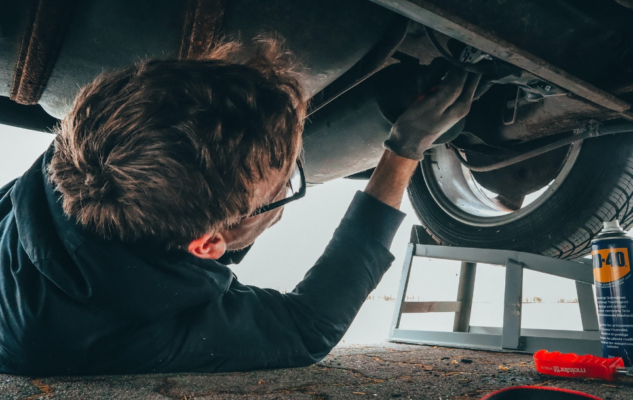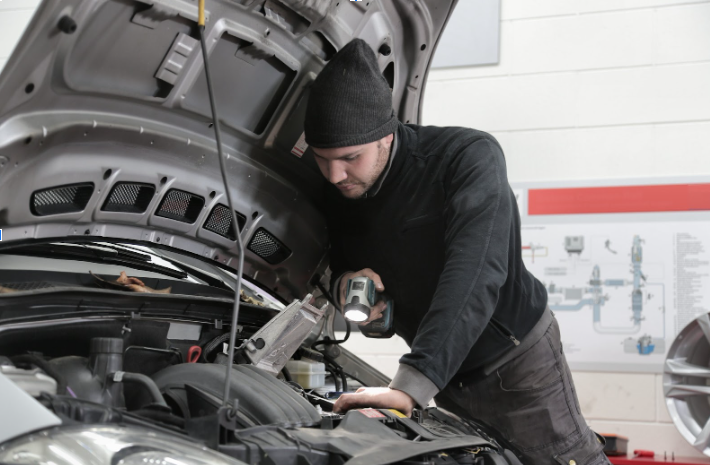Like most drivers, you probably only think about vehicle maintenance when something goes wrong. That’s a mistake.
By implementing a monthly routine for preventive maintenance, you can avoid costly repairs and keep your car running smoothly all year long. Things like changing your antifreeze or checking your brake pads can go a long way.
So, what exactly is preventive maintenance? Preventive maintenance is simply a set of regular tasks to prevent potential problems.
For example, changing your oil regularly is a form of preventive maintenance because it helps to prevent engine damage. Similarly, checking your tire pressure and tread regularly can help to prevent flats and blowouts.
Getting Started With Your Monthly Maintenance Checklist
Maintenance checks aren’t just for when you purchase a used car — regular maintenance checks are vital for your vehicle’s health. Of course, not all forms of preventive maintenance are so obvious.
That’s why it’s important to consult your owner’s manual for specific recommendations from the manufacturer. In general, however, there are some basic things you should do each month to keep your car running smoothly. Here’s a checklist:
#1 – Check Your Engine Oil Level and Quality
One of the most important maintenance tasks you can do for your car is to regularly check the engine oil level and quality. Engine oil helps to lubricate and cool the engine, and over time it can break down and become only partially effective.
Checking the oil level ensures enough oil in the system, while checking the quality helps identify any contaminants or degradation. To check the oil level, simply remove the dipstick and wipe it clean. Then reinsert the dipstick and pull it out again to check the level.
The oil should be between the minimum and maximum markings on the dipstick. To check the quality, simply inspect the dipstick (towards the end) with a light source behind it. Any contaminants will be visible as dark particles in the oil.
#2 – Check Your Coolant and Antifreeze Levels and Condition
It is important to keep an eye on your car’s coolant and antifreeze levels and condition. These fluids play a vital role in keeping your engine from overheating, and they need to be at the correct level to work properly.
You can check the level of your fluids by looking at the overflow tank under the hood of your car. If the level is low, add more fluid until it reaches the “full” line. You should also check the condition of your fluids regularly.
If they look dirty or rusty, it’s time to flush them out and replace them with new fluid.
Keeping an eye on your coolant and antifreeze levels is a simple way to help keep your engine running smoothly. Check your owner’s manual for more information on checking their levels and condition.
#3 – Check Your Tires (Pressure, Tread Depth, and Overall Condition)
Checking your tires is an important part of routine car maintenance. You should check the pressure of all four tires at least once a month and more often if you notice that they are losing air.
You can find the recommended tire pressure for your car in the owner’s manual or on a sticker inside the driver’s door. Use a tire gauge to check the pressure, and inflate or deflate the tires.
In addition to maintaining the correct pressure, you should also check the tread depth of your tires. Tires with shallow treads are more likely to lose traction on wet roads, so it’s important to replace them before they are worn down.
Finally, take a close look at your tires for any signs of damage, such as cracks or bulges.
Remember, car insurance usually won’t cover a tire blowout if it’s caused by improper tire pressure, damage, or wear.
#4 – Inspect Your Brakes (Pads, Rotors, and Fluid Level)
Your brakes are one of your car’s most important safety features, so keeping them in good working order is important. The best way to do this is to inspect them regularly.
- Start by checking the pads for wear. They’re probably still good if they’re more than 1/4 inch thick. If they’re thinner than that, they need to be replaced.
- Check the rotors for cracks or uneven wear. If they’re damaged, they need to be replaced.
- Check the fluid level and add more if necessary.
If you are inexperienced with a vehicle’s braking system, you can always bring your vehicle to an auto shop.
Whichever route you choose to take in brake inspection, it is crucial to keep your brakes in good working order as it will help to ensure your safety on the road.
#5 – Check Your Battery (Electrolyte Level and Terminals)
You should be checking your battery at least once a year and more often if you live in an area with extreme temperatures. The electrolyte level in your battery should be checked to ensure that it is topped off.
The terminals should also be checked for corrosion. If any is present, it can be cleaned with a wire brush. Checking your battery regularly will help to extend its life and prevent problems down the road.
#6 – Inspect Your Belts and Hoses
Periodically, examine your belts and hoses. The belts in your engine are responsible for driving various components, and over time, they can become loose or even break. This can cause serious damage to your engine.
Similarly, the hoses in your vehicle carry vital fluids such as coolant and oil. These, too, can become worn or disconnected over time, resulting in leaks that can cause damage to your engine.
By regularly inspecting your belts and hoses, you can catch any potential problems early on and avoid expensive repairs.
#7 – Clean and Lube Your Door and Trunk Hinges
Over time, door and trunk hinges can become dirty and covered in grime, making them more difficult to open and close. In addition, the metal hinges can become corroded, which can eventually cause them to break.
To keep your hinges in good working condition, it’s important to clean and lubricate them regularly.
You can use a simple household cleaner to remove dirt and grime and then lubricate the hinges with WD-40 or another type of lubricant. By taking these simple steps, you can help to ensure that your door and trunk hinges stay in good shape for years to come.
A Professional Set of Eyes
Many people opt to have a professional change their oil or perform regular maintenance.
Vehicle check-ups or an inspection by a trusted specialist can be important because they can help prevent larger, more costly problems down the road and are likely to provide a more in-depth vehicle analysis.
While the usefulness of mandated vehicle inspections is in question, a trained specialist will know what to look for and can provide you with peace of mind that your vehicle is in good condition.
Each visit should touch on most of the checklist above, including checking fluid levels, inspecting the brakes, and rotating the tires.
By following this simple monthly checklist, you can avoid costly repairs and keep your car running like new. So don’t wait until something goes wrong — start preventive maintenance today.
 Luke Williams writes and researches for the auto insurance comparison site, 4AutoInsuranceQuote.com. His passions include best practices for insurance and helping everyday drivers take care of their vehicles.
Luke Williams writes and researches for the auto insurance comparison site, 4AutoInsuranceQuote.com. His passions include best practices for insurance and helping everyday drivers take care of their vehicles.

